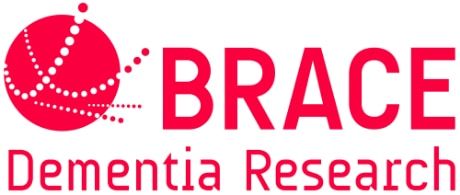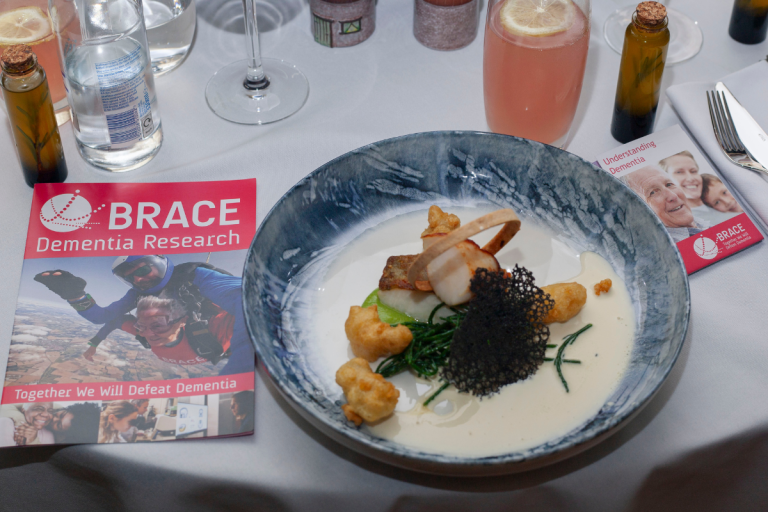Dr Alastair Wilkins, Prof Seth Love & Dr Kelly Hares - University of Bristol
Pilot Project: 2017 - 2018
Neuronal railways: identifying the mechanism behind dysfunctional protein transport in dementia (Pilot Project)
See glossary at bottom of page for definition of underlined words.
Summary
The degradation of neurons is thought to play a very important role in the onset of the symptoms of dementia. In order for neurons to function properly, proteins and other structures need to be transported from the nucleus (where they are made) to the synapse (where they are needed) by motor proteins. KIF5A is a motor protein that binds to KLC1 (kinase light chain) to transport proteins involved in Alzheimer’s disease. In this project, the effect of turning on production of KLC1 (with respect to KIF5A and KLC1) will be tested using brain tissue from BRACE funded South West Dementia Brain Bank. Understanding how this cellular railway system works may lead to effective treatments that can slow neuron degradation and the subsequent symptoms of dementia.
What do we already know?
In order for neurons to work properly, proteins and other structures are transported to where they are needed within the cell. For instance, proteins involved in the function of synapses (chemical junctions between neurons) are made in the cell nucleus and are transported (often long distances) to the synapse. These transport mechanisms are complex and rely on “motor proteins”. Motor proteins bind to specific protein cargoes and carry them on microtubules (essentially railway track-like structures) to where they are needed.
KIF5A is a motor protein that binds to KLC1 (kinase light chain) to transport proteins involved in Alzheimer’s disease. It is known that a gene variation in KLC1 gene is linked to Alzheimer’s disease, and can predict conversion from mild cognitive impairment (MCI) to Alzheimer’s disease. Reduced or dysregulated function of KLC1 may cause an increase in KIF5A expression, to improve the clearing of protein aggregates involved in Alzheimer’s disease.
What is this group trying to find out?
The interactions between KIF5A (the motor proteins), microtubules (the “rails”) and KLC1 (the link that binds the motor proteins to the microtubules) are still unclear. This study aims to determine how the KLC1 gene variation affects the expression of KIF5A and KLC1, as well as the transport of Alzheimer’s disease-related proteins such as APP and amyloid-β. This may help determine why some Alzheimer’s disease sufferers have a much more severe disease course than others.
How do they do this?
Genetic analysis of human brain tissue from Alzheimer’s disease sufferers and healthy age-matched controls (without any cognitive impairment) will be used from the South West Dementia Brain Bank. RNA and protein will be extracted from human tissue, KLC1 and KIF5A expression will be analysed based on genotype and correlated with common markers of AD neuropathology, such as amyloid-β and tau levels.
Why is it important?
Defective protein transport appears to precede protein aggregation, and therefore may represent a “window of opportunity” for preventing pathological aggregates. Improving our understanding of the interactions between KIF5A, KLC1 and microtubules – and how these are affected by genetic variations linked to Alzheimer’s disease – may help us discover new neuroprotective mechanisms and develop potential drug treatments.
Glossary
Motor proteins – Specific proteins responsible for the transport of other proteins around the cell utilising cell ‘railway tracks’ known as microtubles.
Dysregulated (proteins) – Regulation of DNA is one of the ways the production proteins is switched on or off. Dysregulation is when production of proteins is turned off (due to regulatory factors).
Protein aggregates – Protein aggregates are formed when proteins clump together. The clumping together of proteins to form toxic lumps and tangles is a common feature of dementia related diseases.
RNA – Stands for ribonucleic acid, this biomolecule is closely related to DNA and is involved in the formation of proteins from DNA.
Genotype – The genetic makeup of an organism. Our genetic makeup is responsible for many of the characteristics we possess (including hair colour, eye colour etc.)
Neuropathology – The scientific study of diseases that affect the central nervous system.
Amyloid-β – Small peptides which aggregate to form amyloid plaques in Alzheimer’s disease. These plaques will eventually lead to the death of cells in the brain.
Tau – Proteins that stabilise a cell component known as microtubules. In Alzheimer’s and Parkinson’s disease these tau proteins are defective and no longer functional.
Neuroprotective – Something that aids the formation of new brain cells (neurons)
Further information
Please click here for more information about the work of Dr Alastair Wilkins.
Please click here for more information about the work of Prof Seth Love.
Please click here for more information about the work of Dr Kelly Hares.
Share this page




